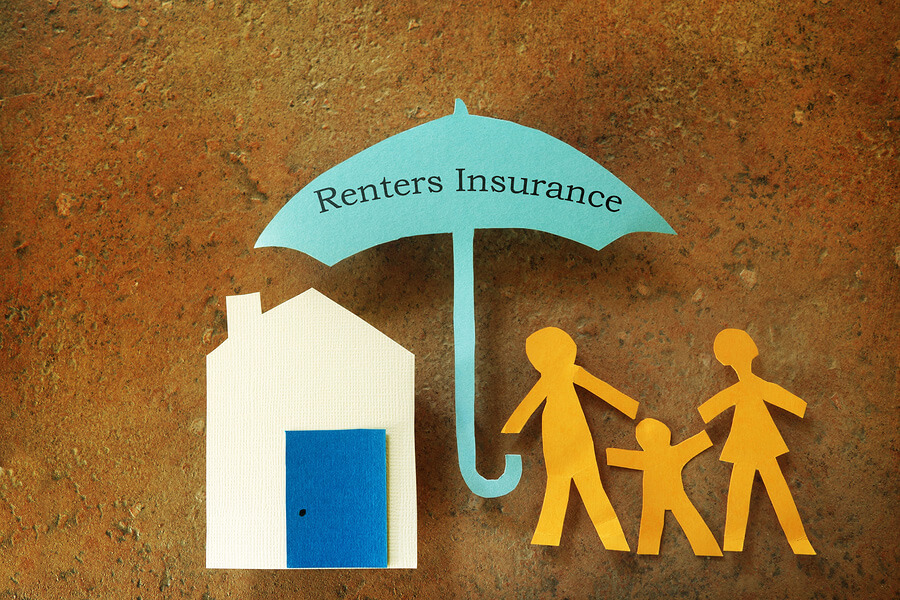
Renter Insurance

Overview:
Renter’s insurance is a type of insurance policy designed for tenants to protect their personal belongings and provide liability coverage in case of accidents or damages occurring in their rental property. It ensures that renters are covered for loss, theft, or damage of personal items and can offer additional living expenses in case the rental becomes uninhabitable.
Key Features of Renter Insurance:
Personal Property Coverage:
- Covers the cost of replacing personal belongings (furniture, electronics, clothing, etc.) if they are damaged or stolen due to covered events such as fire, theft, vandalism, or certain types of water damage.
- Can reimburse for the actual cash value (depreciated value) or replacement cost (without depreciation) of items.
Liability Coverage:
- Provides protection if you are legally responsible for injuries to others or damage to their property while inside your rented home.
- Covers legal fees and medical expenses if someone sues or files a claim after being injured in your rental.
Comprehensive Coverage:
- Covers damage to your car from non-collision events, such as theft, vandalism, fire, natural disasters, or falling objects.
- Also provides coverage for windshield and glass damage.
Personal Injury Protection (PIP):
- Covers medical expenses for you and your passengers in the event of an accident, regardless of fault.
- Can also cover lost wages and rehabilitation costs in some policies.
Uninsured/Underinsured Motorist Coverage:
- Protects you if you’re in an accident caused by a driver who doesn’t have insurance or doesn’t have enough insurance to cover the damage.
- Helps cover medical expenses, vehicle damage, and lost wages if the other driver is at fault but can’t pay.
Medical Payments Coverage:
- Covers medical bills for you and your passengers if injured in an accident, regardless of fault.
- Typically includes hospital stays, surgeries, doctor visits, and rehabilitation costs.
Deductible:
- The amount you pay out-of-pocket before your insurance starts covering the rest of the claim.
- Higher deductibles lower the premium but increase your upfront cost in the event of a claim.
Premium:
- The regular payment made to the insurer to maintain your coverage.
- Premiums are influenced by factors such as driving history, vehicle type, location, coverage type, and deductible.
No-Claim Bonus (NCB):
- A discount offered on premiums for each year you don’t make a claim.
- Rewards safe driving habits and can significantly lower insurance costs over time.
Third-Party Liability Insurance:
- Mandatory in many countries, this insurance covers damage to third-party vehicles or property and any injury or death caused by the insured vehicle.
- Does not cover damage to your own vehicle.
Roadside Assistance Coverage:
- Pays for repairs to your car if you’re involved in an accident, regardless of fault.
- Covers damage from accidents involving another vehicle, objects (e.g., trees, poles), or rollovers.
Gap Insurance:
- Covers the difference between what you owe on your car loan and the car’s actual cash value (ACV) if it’s totaled or stolen.
- Important for drivers with financed or leased vehicles where the loan balance exceeds the car’s market value.
Usage-Based Insurance (Pay-As-You-Drive):
- Premiums are calculated based on driving behavior tracked by a telematics device or smartphone app.
- Rewards safe driving with lower premiums for good habits like reduced speed, minimal hard braking, and low mileage.
Rental Car Reimbursement:
- Covers the cost of renting a car if your vehicle is being repaired due to a covered claim.
- Ensures you have access to transportation while your car is out of service.
Glass Coverage:
- Pays for repair or replacement of windows, windshields, or sunroofs damaged in an accident or by debris.
- Some policies include zero-deductible windshield repair options.
Custom Parts and Equipment Coverage:
- Provides additional coverage for aftermarket parts, customizations, or modifications made to your vehicle (e.g., custom rims, sound systems).
- Standard policies may not cover non-factory-installed equipment, so additional coverage may be needed.
Factors Affecting Premiums:
- Driver’s Age and Experience: Younger and inexperienced drivers often pay higher premiums.
- Vehicle Make and Model: High-value cars, sports cars, or vehicles with expensive repairs cost more to insure.
- Location: Urban areas with higher traffic and crime rates may increase premiums.
- Driving History: A clean driving record results in lower premiums, while accidents or violations increase costs.
- Mileage: Higher annual mileage leads to higher premiums as the risk of accidents increases with time on the road.
Policy Exclusions:
- Common exclusions include intentional damage, accidents while under the influence of alcohol or drugs, racing, and using the vehicle for commercial purposes without the correct insurance.
Claim Process:
- Involves reporting the incident, providing details of the accident or damage, and submitting relevant documents (e.g., police reports, repair estimates).
- Insurers will evaluate the claim and either approve, deny, or partially settle the claim based on coverage and terms.
Discounts:
- Many insurers offer discounts for good driving habits, anti-theft devices, bundling policies (e.g., home and auto), multi-vehicle policies, and safety features like airbags.
Why Renter Insurance is Important:
- Legal Requirement: In most countries, car insurance (at least third-party liability) is mandatory to drive on public roads.
- Financial Protection: Protects against expensive repairs, medical bills, and liability for damages caused to others.
- Peace of Mind: Knowing that your car is insured provides security in the event of accidents, theft, or damage.
- Covers Unforeseen Events: Whether it’s natural disasters, accidents, or vandalism, car insurance shields you from unexpected costs.

